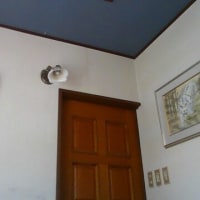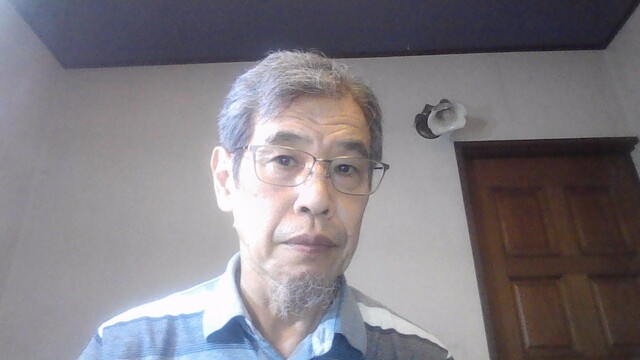《section 2》 Electric weak unification theory 第二章 電弱統一理論
T or anti T is elementary absorbed in the gauge field soon, and N or anti N is not elementary but absorbed soon in the same way. T turns out to be W⁻ as A⁻ in Weinberg = Salam theory, and aiti T turns out to be W⁺ as A⁺ in the same way. But, N or anti N is quite a difficult particle in comparison with others. Even if it is not so, T or N is different from A or B in Weinberg = Salam theory. The former has spin 0 as Nambu = Goldstone particle, the latter has spin 1 as gauge boson. I suppouse T・anti T・N・anti N are semi- or pre-particles in the Universe. At least N or anti N will not exists alone.
Tとか反Tとかはゲージ場にすぐに吸収され、Nとか反Nとかは単独ではされないが、同じくすぐにゲージ場に吸収される。Tはワインバーグ=サラム理論におけるA⁻ボソンのようにW⁻粒子に変化し、反TはA⁺ボソンのようにW⁺に変化する。だけどNや反Nは他の粒子とは違った粒子なので一筋縄ではいかない。そうでなくてもTとかNとかはワインバーグ=サラム理論におけるA粒子とかB粒子とかとは違うのだ。TとはNは南部=ゴールドストンボソンとしてスピン0であるし、A粒子とかB粒子とかはゲージボソンとしてスピン1を持っている。私が思うにTとかNとかは宇宙において準もしくは前粒子なのではないだろうか。少なくともNと反Nとは単独では存在していない。
If spin and mass both are 0, a particle like that does not exist in the Universe. N or antiN is right so. T or antiT has mass from an electric charge, and it's not extremely light. From a story to here they exist in the Universe alone. But it will be elementary absorbed in the gauge field soon, and be rotted as W⁻ or W⁺ later.
スピンと質量が共に0ならばこのような素粒子は宇宙に存在できない。Nや反Nは正にそうである。Tや反Tには電荷からくる質量が存在し、それは極めて軽いとは言えないだろう。ここまでの話からすればTと反Tとは単独で宇宙に存在しそうである。しかし、それはすぐに単独でゲージ場に吸収され、後でW⁻粒子やW⁺粒子として崩壊してしまうだろう。
N or anti N makes some complex structure with the aid of T and anti T pair.
Nや反NはT反T対の助けを借りて少し複雑な構造を作っている。
T and anti T pair looks just like a B boson of Weinberg = Salam theory, but it makes nowise different formation. The former has two component parts, the latter is elementary. However, in Weinberg = Salam theory, they explain that A boson is made up two-component system. The formula of them are p and anti q・p and anti p + q and anti q・q and anti p. For my thought spontaneous symmetry breaking has only one-component system. That's quite contrary to what I've thought. I want to straighten it if I assume it me with my UFM. I suppose interactive spontaneous breaking in the electromagnetic field will do it perfectly, and in next the strong interaction field too.
T反T対というのはワインバーグ=サラム理論におけるBボソンとそっくりであるが、それとは構成がまったく異なっている。前者は二成分から出来ており、後者は単一成分である。しかしながらワインバーグ=サラム理論ではAボソンは二成分系であるように説明されている。その定式はp反q・p反p+q反q・q反pだ。私の考えでは自発的対称性の破れには一成分系のシステムしか与えられないように思う。それではまるであべこべだ。私は私のUF模型を使ってそこをこそ正してみたい。私が思うに電磁場における相互作用による対称性の破れがそれを完璧にやってのけるだろうし、その次には強い相互作用の場がちゃんとやるだろう。
T or anti T is elementary absorbed in the gauge field soon, and N or anti N is not elementary but absorbed soon in the same way. T turns out to be W⁻ as A⁻ in Weinberg = Salam theory, and aiti T turns out to be W⁺ as A⁺ in the same way. But, N or anti N is quite a difficult particle in comparison with others. Even if it is not so, T or N is different from A or B in Weinberg = Salam theory. The former has spin 0 as Nambu = Goldstone particle, the latter has spin 1 as gauge boson. I suppouse T・anti T・N・anti N are semi- or pre-particles in the Universe. At least N or anti N will not exists alone.
Tとか反Tとかはゲージ場にすぐに吸収され、Nとか反Nとかは単独ではされないが、同じくすぐにゲージ場に吸収される。Tはワインバーグ=サラム理論におけるA⁻ボソンのようにW⁻粒子に変化し、反TはA⁺ボソンのようにW⁺に変化する。だけどNや反Nは他の粒子とは違った粒子なので一筋縄ではいかない。そうでなくてもTとかNとかはワインバーグ=サラム理論におけるA粒子とかB粒子とかとは違うのだ。TとはNは南部=ゴールドストンボソンとしてスピン0であるし、A粒子とかB粒子とかはゲージボソンとしてスピン1を持っている。私が思うにTとかNとかは宇宙において準もしくは前粒子なのではないだろうか。少なくともNと反Nとは単独では存在していない。
If spin and mass both are 0, a particle like that does not exist in the Universe. N or antiN is right so. T or antiT has mass from an electric charge, and it's not extremely light. From a story to here they exist in the Universe alone. But it will be elementary absorbed in the gauge field soon, and be rotted as W⁻ or W⁺ later.
スピンと質量が共に0ならばこのような素粒子は宇宙に存在できない。Nや反Nは正にそうである。Tや反Tには電荷からくる質量が存在し、それは極めて軽いとは言えないだろう。ここまでの話からすればTと反Tとは単独で宇宙に存在しそうである。しかし、それはすぐに単独でゲージ場に吸収され、後でW⁻粒子やW⁺粒子として崩壊してしまうだろう。
N or anti N makes some complex structure with the aid of T and anti T pair.
Nや反NはT反T対の助けを借りて少し複雑な構造を作っている。
T and anti T pair looks just like a B boson of Weinberg = Salam theory, but it makes nowise different formation. The former has two component parts, the latter is elementary. However, in Weinberg = Salam theory, they explain that A boson is made up two-component system. The formula of them are p and anti q・p and anti p + q and anti q・q and anti p. For my thought spontaneous symmetry breaking has only one-component system. That's quite contrary to what I've thought. I want to straighten it if I assume it me with my UFM. I suppose interactive spontaneous breaking in the electromagnetic field will do it perfectly, and in next the strong interaction field too.
T反T対というのはワインバーグ=サラム理論におけるBボソンとそっくりであるが、それとは構成がまったく異なっている。前者は二成分から出来ており、後者は単一成分である。しかしながらワインバーグ=サラム理論ではAボソンは二成分系であるように説明されている。その定式はp反q・p反p+q反q・q反pだ。私の考えでは自発的対称性の破れには一成分系のシステムしか与えられないように思う。それではまるであべこべだ。私は私のUF模型を使ってそこをこそ正してみたい。私が思うに電磁場における相互作用による対称性の破れがそれを完璧にやってのけるだろうし、その次には強い相互作用の場がちゃんとやるだろう。


















